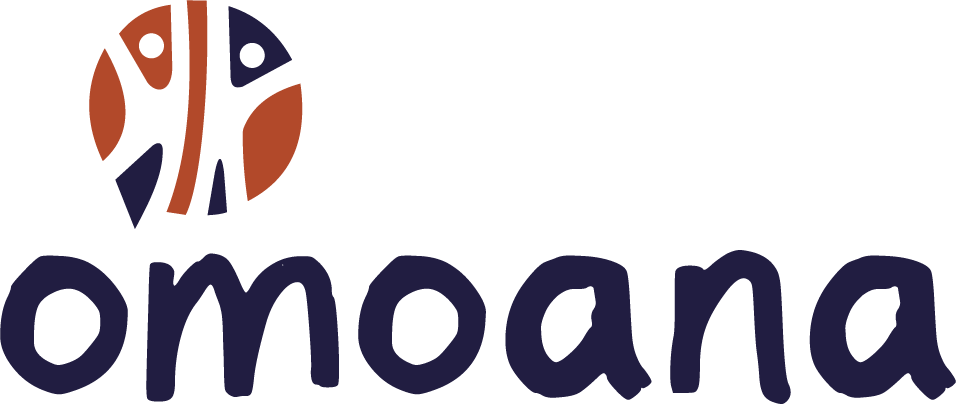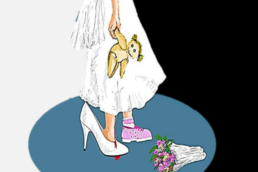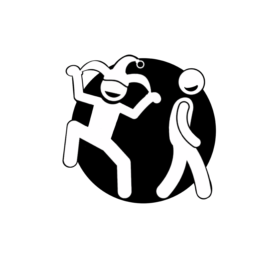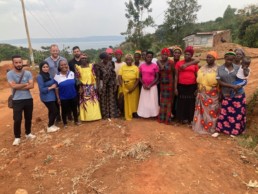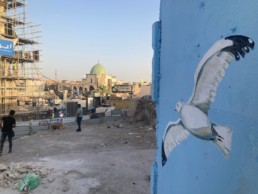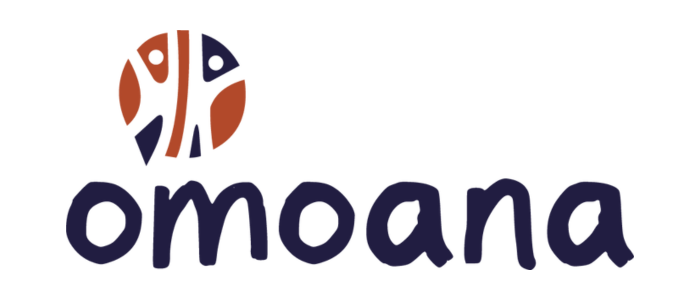“Drawing Together”, Rêver un futur meilleur à travers le dessin
Si l’on demande à une personne, d’où qu’elle soit dans le monde, de dessiner sa colère, on obtiendra des palettes de couleurs et des formes similaires. Partout, nous ressentons les mêmes émotions, avec l’humanité comme simple dénominateur commun. La colère est souvent le résultat de différents sentiments, que ce soit l’inquiétude, la solitude ou l’impuissance. Un enfant ou un jeune malmené par la guerre ou la maladie peut être amené à se sentir dépourvu face à ce sentiment et à l’exprimer d’une manière qui pourra empirer sa situation. Les jeunes vivent des discriminations en lien avec leurs statuts sérologique, de genre, ou d’ancien enfant soldat.
Y répondre par de l’agressivité ou de l’isolement, nourrit un cycle de méfiance avec son entourage. Parmi les activités d’Omoana, les sessions psychosociales leurs permettent d’identifier les signes de colère et d’avoir la capacité de prendre du recul pour y répondre de manière constructive. Cela s’est fait jusqu’ici à travers des discussions interactives et des séances individuelles de soutien psychologique. Le nouveau manuel « Drawing Together » offre des exercices complémentaires pour aborder la question de la gestion de la colère à travers le dessin. On demandera notamment à l’enfant de dessiner sa colère et les manières constructives d’y répondre ou de l’exprimer.
En plus des exercices sur la gestion des émotions, le manuel en offre de nombreux autres applicables par les travailleurs sociaux. Dessiner un ami et les échanges qui en suivront permettent de discuter des relations saines et toxiques, un sujet particulièrement important dans des contextes de violence ou de délinquance. Aborder sa propre identité, la gestion des défis ou ses aspirations pour le futur offriront un champ d’exploration aux enfants pour apprendre à mieux se connaitre, à s’accepter et à avancer vers un futur plus prometteur. Ce manuel, réalisé de manière participative grâce au fond Partage des Savoirs de la Fédération Genevoise de Coopération, est un nouvel outil pratique pour le personnel de nos partenaires, qui l’utilise déjà dans les projets mis en œuvre sur le terrain avec le soutien de nos généreux donateurs.
“Theatre Together”, Des exercices à but psychosocial
Pour un jeune ou un enfant victime de violences, surpasser le mal-être qui s’en découle peut prendre différents chemins. Aborder directement les thématiques d’oppression amène à explorer des solutions à celles-ci. C’est ce que permet le théâtre forum, qui est l’une des approches inclues dans le nouveau manuel créé de manière participative par les organisations partenaires d’Omoana.
Pour avancer, les enfants et les jeunes doivent également avoir l’opportunité de s’échapper des expériences du passé ou d’un présent qui les malmène. Ainsi, des exercices d’improvisation théâtrale, qui font également partie des activités proposées, sont une opportunité de s’amuser tout en développant des compétences sociales. S’il est souvent cru que cette technique nécessite une répartie hors pair, ce sont avant tout des attitudes que les participants doivent pratiquer qui vont en faire le succès. Pour réussir un exercice ensemble, ceux-ci doivent être constamment à l’écoute de l’autre, accepter sa proposition et construire sur celle-ci. Il devront rester au présent et vivre ce moment d’amusement sans se juger. Finalement, au fur et à mesure des histoires qu’ils construisent, ils développent leur imagination, leur capacité à voir le monde différemment. Cela contribue donc à renforcer leurs compétences en promotion de la paix, en entrepreneuriat ou en communication.
Impliquer les enfants vulnérables, mais aussi leur famille et leur entourage, est nécessaire pour favoriser un environnement sain. Le théâtre permet à chacun de se mettre à la place des autres.
Lorsqu’ils jouent des rôles de personnes différentes de ce qu’ils sont, ils traversent les expériences d’autrui à travers leurs propres sens. En encourageant des méthodes modernes du théâtre, Omoana les rend accessible à des enfants exposés à la violence et à leurs communautés afin qu’ils puissent s’approprier cet art dans un but de développement personnel et de vivre-ensemble.
2 semaines d'échange, 10 ans d'expérience - Nouvelles d'Omoana - Octobre 2024
Grâce au fonds Partage des savoirs de la Fédération Genevoise de Coopération, trois collègues Irakiens ont pu se rendre en Ouganda où ils ont participé à des ateliers et ont visité les projets. Les échanges qui concernent notamment la manière de soutenir des enfants touchés par la violence se sont avérés précieux. Amjed Al-Rufaye nous fait un retour d’expérience.
J’ai toujours été fasciné par les projets soutenus par Omoana en Ouganda, mais pendant mon séjour là-bas, ils ont continué à surpasser mes attentes.
Je suis Amjed Al-Rufaye, originaire de Bagdad, en Irak. Par le passé, j’ai été engagé auprès de diverses ONGs en Irak et en Turquie. Je travaille actuellement en tant que conseiller technique pour Omoana et Aid Gate Organization en Irak.
Notre voyage en Ouganda a commencé à Gulu avec un atelier de quatre jours réunissant les équipes des ONGs actuellement soutenues par Omoana en Ouganda. Avec d’autres collègues, nous avons animé des exercices d’art visuel pour le soutien psychosocial dans le cadre de la création du manuel « Drawing Together ». L’atelier s’est poursuivi avec Adrien et d’autres coachs de théâtre qui ont présenté des exercices de théâtre (pour le manuel « Theatre Together »). Ce fut une expérience créative et interactive qui a rempli la salle de rires. A la fin, nous avons écouté les retours, discuté de l’importance de l’art, de la manière dont il peut bénéficier aux enfants et comment il peut être adapté aux projets et à la culture locale.
Dans les jours qui ont suivi, nous avons eu des réunions avec les ONGs partenaires d’Omoana. Nous avons eu une présentation des équipes derrière les projets, échangé des questions et appris des expériences de chacun. Après cela, ils nous ont emmenés sur le terrain et montré comment ils interagissaient avec les communautés locales.
Au cours de ces visites, j’ai acquis des informations précieuses sur l’histoire et les besoins de la communauté locale, et comment l’Ouganda et l’Irak ont traversé des circonstances similaires. Par exemple, j’ai adoré ce que fait vivo à Gulu pour aider les victimes à surmonter les traumatismes d’avoir été enlevées par l’Armée de Résistance du Seigneur pendant leur enfance et les horreurs qu’elles ont été forcées à voir ou à faire. Entendre ces expériences m’a rappelé l’époque de l’Etat Islamique à Mossoul et aux histoires que j’ai entendu des habitants. Cela m’a fait réfléchir à comment nous pouvons adapter ce que fait vivo pour aider les jeunes dans les centres de détention et la communauté. Il en est de même pour St. Moses et Hashtag Gulu et les projets de soutien psychosocial qu’ils réalisent au sein de la communauté, et comment nous pouvons mettre en œuvre des projets similaires en soutenant et en revitalisant les centres communautaires pour jeunes négligés en Irak. Omoana House et St. Francis et leur soutien aux personnes vivant avec le VIH m’ont ouvert les yeux sur un problème grave auquel l’Irak est confronté. Le manque de sensibilisation concernant le VIH et le nombre croissant de cas non divulgués au sein de la communauté en font une bombe à retardement potentielle.
Nous avons beaucoup appris sur les processus de diverses ONGs de développement, les défis auxquels elles étaient confrontées et comment elles les ont surmontés. Cela m’a fourni des informations sur Omoana, a mis en lumière l’importance de l’art et comment cela a aidé les bénéficiaires à s’exprimer lorsque les mots ne suffisaient pas. Cela m’a également ouvert les yeux sur de nouvelles idées et projets qui peuvent être adaptés en Irak. Ce fut une expérience très artistique remplie de danses traditionnelles et de performances théâtrales. En deux semaines en Ouganda, nous avons l’impression d’avoir gagné dix ans d’expérience ! Nous avons échangé des connaissances précieuses, nous nous sommes immergés dans une nouvelle culture et avons formé de solides amitiés, tout en échappant aux températures de 50°C à Bagdad.
Amjed Al-Rufaye
Conseiller Technique, Omoana
Breaking news : Omoana étend ses activités à l’Irak
Construire un nouveau récit pour la paix avec la jeunesse de Mosul
Omoana renforce les ressources des jeunes en tant qu’acteurs du développement et de la cohésion sociale de leur pays. Originellement active en Ouganda, avec une expérience riche auprès des jeunes anciennement affiliés à l’Armée de Résistance du Seigneur/ Lord Resistance Army (LRA), l’organisation a développé un savoir en soutien psychosocial à travers l’art et en santé mentale. C’est ainsi qu’elle a décidé d’étendre ses activités à l’Irak, pays dans lequel la jeunesse fait face à des dynamiques de violence comparables, avec de nombreux enfants et jeunes associés aux groupes armés, ayant de lourdes conséquences sur leur bien-être.
Développer les compétences sociales et prévenir la violence chez les jeunes
Un lourd passé de violence
Avec près d’un quart de la population irakienne âgée de 15 à 24 ans, la jeunesse est l’épine dorsale de la transformation sociale, économique et politique du pays. Ils sont cependant touchés de manière disproportionnée par les conflits. Après que l’Etat islamique (EI) ait occupé une grande partie de son territoire, beaucoup reste à reconstruire. Les enfants et les jeunes irakiens ont été grandement affectés par la crise. Ils ont subi et parfois commis des niveaux élevés de violence. Malgré l’environnement dans lequel ils vivaient et les groupes qu’ils ont rejoints, ils doivent avoir la possibilité de construire un nouveau récit pour la paix.
Des années de conflit entre les forces de sécurité irakiennes et l’EI ont dévasté le Nord du pays. Selon le Bureau de la coordination des affaires humanitaires des Nations Unies (UNOCHA), près de 664’000 enfants sont exposés à des risques de protection. Parmi ces enfants, 122’000 vivent dans des logements critiques avec des difficultés pour accéder aux services essentiels. Le manque d’opportunités de subsistance pour leurs familles et l’épidémie de COVID-19 ont eu un impact négatif sur leur potentiel de génération de revenus. En conséquence, les enfants continuent d’être exposés aux risques de travail et de mariage précoce. Environ 456’000 enfants manquent toujours de documents d’état civil essentiels et près de 300’000 enfants en âge scolaire ne fréquentent pas régulièrement l’éducation formelle ou informelle, ce qui les expose à des risques accrus de recrutement par des groupes armés dans les zones où ils opèrent. Plus de 1’000 enfants restent privés de liberté pour des raisons liées à la sécurité nationale. Les enfants issus de familles qui étaient auparavant associées à des groupes armés ou perçus comme l’étant sont victimes de discrimination et sont confrontés à des difficultés pour s’intégrer dans leurs communautés.
Les problématiques de protection mentionnées ci-dessus sont des facteurs d’incitation pour des jeunes de se retourner vers les groupes armés. Quoi qu’il en soit, l’intégration sociale des jeunes à risque de recrutement par des groupements extrémistes violents reste un élément clef et complexe auquel il faut répondre.
Art pour la paix et protection pour les enfants de Mosul
Le premier partenaire d’Omoana dans le pays sera Aid Gate Organization (AGO). Aid Gate Organization (AGO) est une organisation nationale indépendante et non partisane dont l’histoire remonte à 2014 avec le début de l’occupation d’une grande partie de l’Irak par L’Etat Islamique (EI). AGO travaille sans relâche pour aider les personnes déplacées à l’intérieur du pays, les réfugiés, les demandeurs d’asile, les rapatriés et les communautés d’accueil vulnérables en Irak. L’objectif du nouveau projet mis en œuvre avec le soutien technique et financier d’Omoana sera de renforcer la capacité, la résilience et les talents des enfants et des jeunes touchés par les conflits grâce à des initiatives basées sur l’art et des services de protection. Il visera les enfants et les jeunes en détention, ainsi que ceux des communautés à risque. L’approche vise à travailler à différents niveaux afin de favoriser la réintégration des enfants anciennement affiliés aux groupes armés et favoriser le bien-être des jeunes des communautés. Au niveau individuel, les enfants en conflit avec la loi bénéficieront d’un suivi leur permettant d’avoir accès à des services légaux, d’éducation et de formation professionnels. Un soutien psychologique de basse intensité sera également disponible. Leurs familles seront aussi épaulées et conseillées sur les meilleures manières d’accueillir un enfant ou un jeune après la détention. Les enfants et jeunes en détention et dans les communautés recevront des séances d’éducation à la paix, pour renforcer leurs compétences sociales, leur esprit critique et prévenir la violence. Ils bénéficieront également d’activités artistiques afin de développer leurs talents, et leur confiance personnelle. Les jeunes des communautés seront aussi amenés à mener eux même des événements communautaires sur des thématiques en lien avec la promotion de la paix. Des outils tels que le théâtre forum ou la création de fresques murales pourront être utilisés. Les travailleurs sociaux d’AGO et des services publics recevront également des formations en éducation à la paix auprès des jeunes et en services psychologiques de basse intensité.
Préserver la dignité des enfants affiliés aux groupes armés n’est pas une tâche aisée. Cela implique un engagement, une mise en réseau, et des compétences techniques. Nous nous efforçons de collaborer avec les experts nationaux et internationaux afin de répondre au mieux à ces défis et tenter de leur donner une attention bienveillante, malgré la violence dont ils sont avant tout victimes.
